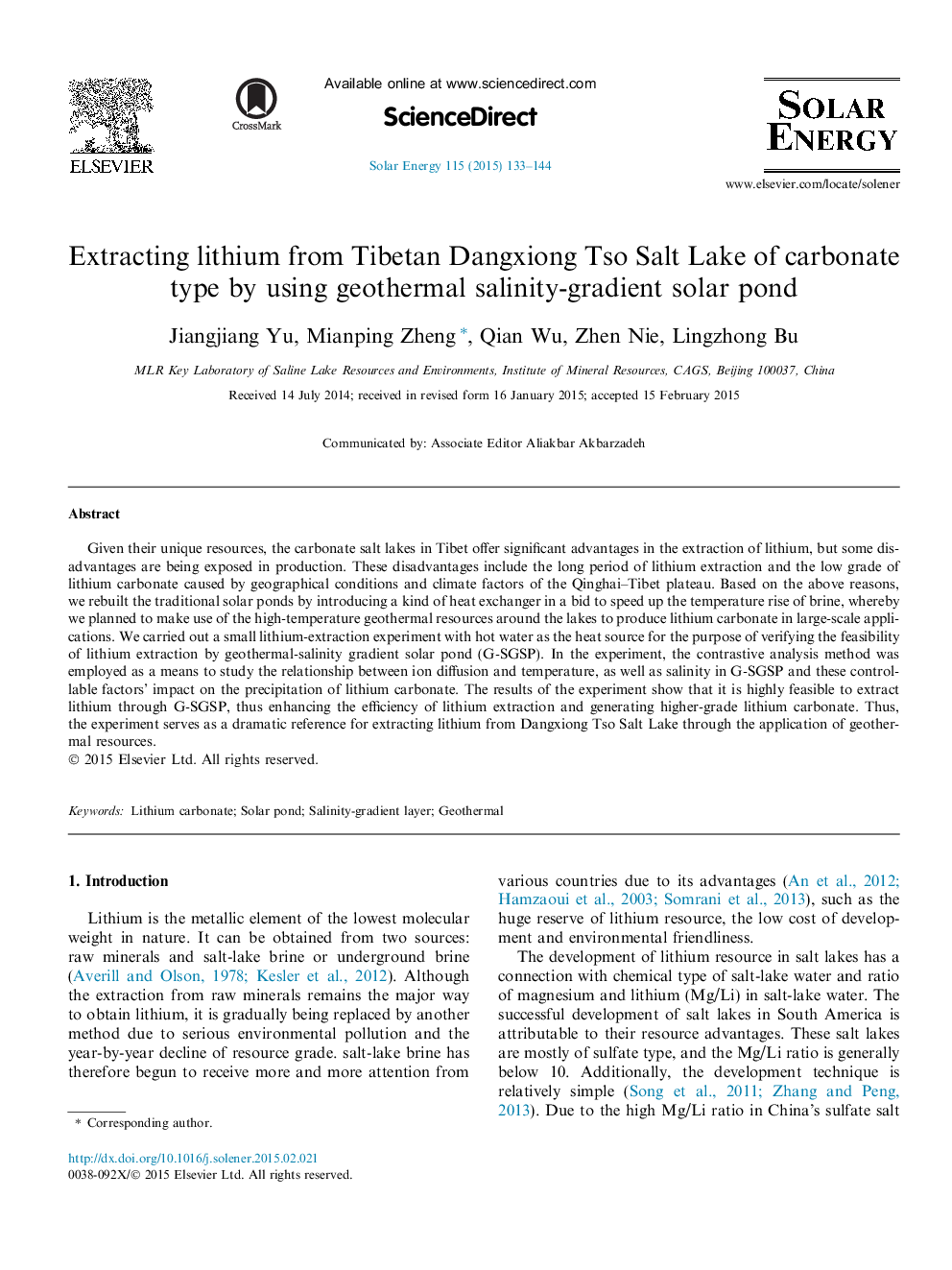| Article ID | Journal | Published Year | Pages | File Type |
|---|---|---|---|---|
| 7937925 | Solar Energy | 2015 | 12 Pages |
Abstract
Given their unique resources, the carbonate salt lakes in Tibet offer significant advantages in the extraction of lithium, but some disadvantages are being exposed in production. These disadvantages include the long period of lithium extraction and the low grade of lithium carbonate caused by geographical conditions and climate factors of the Qinghai-Tibet plateau. Based on the above reasons, we rebuilt the traditional solar ponds by introducing a kind of heat exchanger in a bid to speed up the temperature rise of brine, whereby we planned to make use of the high-temperature geothermal resources around the lakes to produce lithium carbonate in large-scale applications. We carried out a small lithium-extraction experiment with hot water as the heat source for the purpose of verifying the feasibility of lithium extraction by geothermal-salinity gradient solar pond (G-SGSP). In the experiment, the contrastive analysis method was employed as a means to study the relationship between ion diffusion and temperature, as well as salinity in G-SGSP and these controllable factors' impact on the precipitation of lithium carbonate. The results of the experiment show that it is highly feasible to extract lithium through G-SGSP, thus enhancing the efficiency of lithium extraction and generating higher-grade lithium carbonate. Thus, the experiment serves as a dramatic reference for extracting lithium from Dangxiong Tso Salt Lake through the application of geothermal resources.
Related Topics
Physical Sciences and Engineering
Energy
Renewable Energy, Sustainability and the Environment
Authors
Jiangjiang Yu, Mianping Zheng, Qian Wu, Zhen Nie, Lingzhong Bu,
